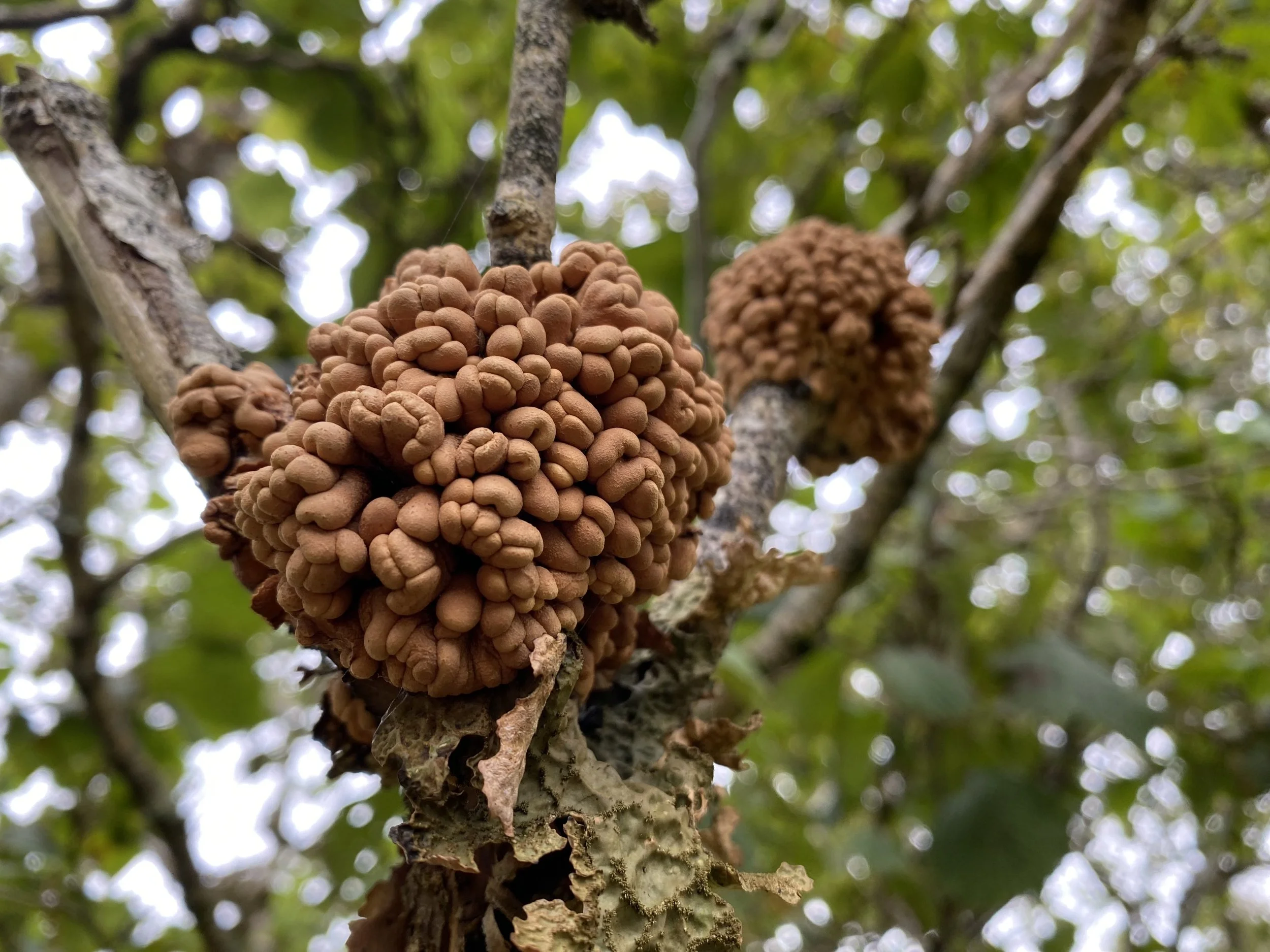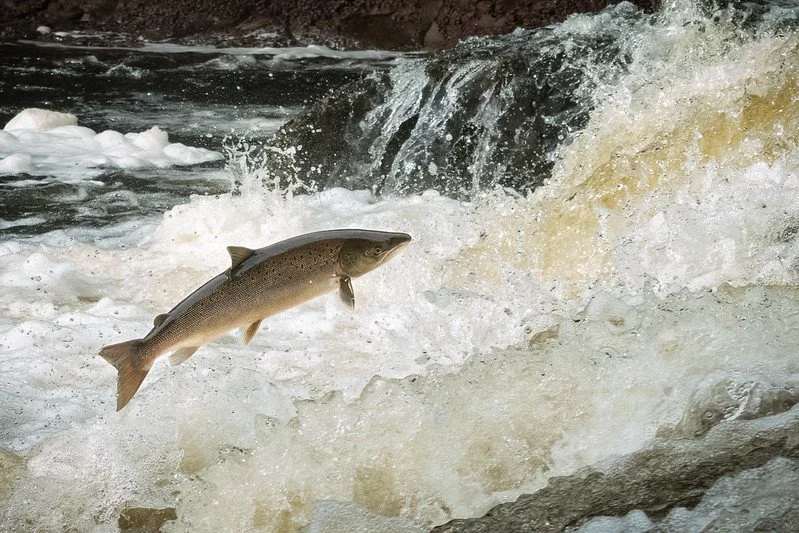Five Iconic Temperate Rainforest Species
Written by: Alejandra Hart
A royal fern growing by a temperate rainforest stream, a sign of natural regeneration. Credit: Bull and Wolf.
Temperate rainforests are some of the rarest and most diverse ecosystems in the UK. These woodlands are found in small fragments along the western coast, and they support an incredible range of life: from mosses and lichens to birds, fish and fungi. Due to centuries of exploitation, over grazing and drainage, temperate rainforests have become fragmented and degraded.
At the Woodland Trust, we are working to bring temperate rainforests back to health, reconnecting and restoring the remaining fragments. On Biodiversity Day, we’re celebrating five key rainforest species that are helping us do just that: the willow, beaver, white-tailed sea eagle, Atlantic salmon and hazel gloves fungus. In this blog, we will explore these species' role in the ecological web and nutrient cycle of temperate rainforests.
Hazel Gloves Fungus
Small, bright orange, and shaped like tiny rubber gloves wrapped around branches, the hazel gloves fungus is one of the rarest species in Europe. It grows only in Atlantic hazelwoods, making it a symbol of Britain’s temperate rainforests.
Mycologist David Satori, who studies Atlantic woodlands and hazelwoods, calls it “as iconic to British rainforests as the orangutan is to Indonesia.” But what really sets it apart is how it survives.
In the words of David Satori:
“It’s a globally rare, bizarre-looking fungus… in the same family as the famous Cordyceps that take control over insects. Turns out this species hunts down other fungi, particularly the Glue Crust. The Glue Crust grows through hazel stems and creates hard mycelial bridges that allows it to move along trees without touching the ground. The Hazel Gloves feeds off the mycelium of the Glue Crust in a kind of cat-and-mouse game, and in Britian they’re only found in Atlantic Hazelwoods, which I think are some of the most special types of temperate rainforest we have.”
Hazel Gloves Fungus found on the Isle of Sky, in Scotland. Credit: David Satori
While the Hazelgloves Fungus is endemic to rainforests, the following species are not exclusive to this habitat but have an extremely important and unique role.
Willow
Willow trees are particularly important in temperate rainforests due to their ability to grow quickly in wet conditions and hold water in the landscape. Their roots stabilise soil, their presence helps lock in nutrients, and their canopy cools the surrounding air and water. When found in river valleys and woodland edges, they help slow the flow of water, reducing flood risk and keeping soils damp enough to support the mosses, liverworts and lichens these rainforests are known for.
The willow is useful for other species too. Their flexible branches are used for building nests, their leaves support insects, and their structure offers shelter for birds and mammals. Barbestelle bats, one of the rarest woodland specialist bats in the UK, depend on willow for their lifecycle. They are the earliest emerging bat, so they need the earliest emerging moth as their food source. The moth, therefore, needs the earliest emerging flower: the willow flower. There is a layer of ecology all linked to willow. They also provide the raw material for another rainforest engineer: the beaver.
The canopy of a willow tree, providing shade and shelter for other species. Credit: Zhenya
Beaver
Beavers were once widely found in Britain’s ecosystems. Now, as they return, they’re helping shape rivers and woodlands in ways we couldn’t easily do ourselves.
Beavers don’t like the sound of running water, so part of the work on our estate is making our sites beaver-ready by slowing the flow of water with leaky dams. Beavers cut down trees like willow to build dams, slowing streams and allowing water to expand into the surrounding land. This rewetting creates pools, wet woodland and marshes, all of which are a haven for species like frogs, dragonflies, and dormice. By transforming fast-flowing streams into biodiverse wetlands, beavers are re-creating the slower-moving, wetter river systems that used to be common in western Britain.
A beaver, also known as a rainforest engineer, munching on its favourite snack - willow! Credit: Laurie Campbell
White-tailed Sea Eagle
The white-tailed sea eagle is Britain’s largest bird of prey. It once lived in the temperate woodlands of the west coast, nesting in tall trees and cliffs while feeding mostly on fish and seabirds. Though extinct in the UK for much of the 20th century, it is now slowly returning to our coasts and forests.
The sea eagle helps link marine and forest ecosystems. By feeding at sea and nesting inland, they bring nutrients from the ocean back into the forest. The remains of its prey provide food for other species and enrich the soil, supporting plant growth in the low-nutrient forests.
A majestic white-tailed sea eagle in flight on the Isle of Mull, in Scotland. Credit: Dan Russon.
Atlantic Salmon
Like the sea eagle, the Atlantic salmon connects land and sea, playing an important role in the nutrient cycling that supports rainforest growth. They hatch in streams, travel to the ocean, and then return to the same rivers to spawn. Along the way, they bring nutrients from the sea, including nitrogen and phosphorus, back into our rivers.
In other temperate rainforest regions, such as the Pacific Northwest, salmon are known as a keystone species, vital to rainforest health. Bears, eagles and otters all rely on them for food, and as their remains decompose, they enrich the soil of temperate rainforests.
In the UK, salmon once played a similar role, but populations have declined and are under serious pressure. Restoring rivers, improving water quality, and rewetting will give them a better chance to recover.
A salmon making the most of a spate after rain on the River Almond, Perthshire, Scotland. Credit: Gregg Parson.
Together, these five species show how temperate rainforests work. Willow and beaver shape the landscape. Salmon and sea eagles connect it to the sea, moving nutrients back inland. And Hazel Gloves reminds us that fungi, lichens, mosses, and deadwood are also essential to the functionality of rainforests.
Britain’s temperate rainforests are fragile, rare, and irreplaceable. But with your help, they can thrive again.
On this Biodiversity Day, take a moment to appreciate the richness of life that surrounds us and join us in protecting and restoring temperate rainforests. Whether you explore our projects, volunteer your time or donate, your support helps bring rainforests back to life.
Support the Woodland Trust’s Temperate Rainforest recovery efforts here: https://woodlandtrust.org.uk/support-us/give/appeals/buckland-wood/
Rainforest Recovery is the South West strand of The Rainforest Restoration Project. It is being led by the Woodland Trust in partnership with Plantlife. This project is funded as part of the Government's Species Survival Fund. The fund was developed by Defra and its Arm's-Length Bodies. It is being delivered on behalf of Defra by The National Lottery Heritage Fund.







